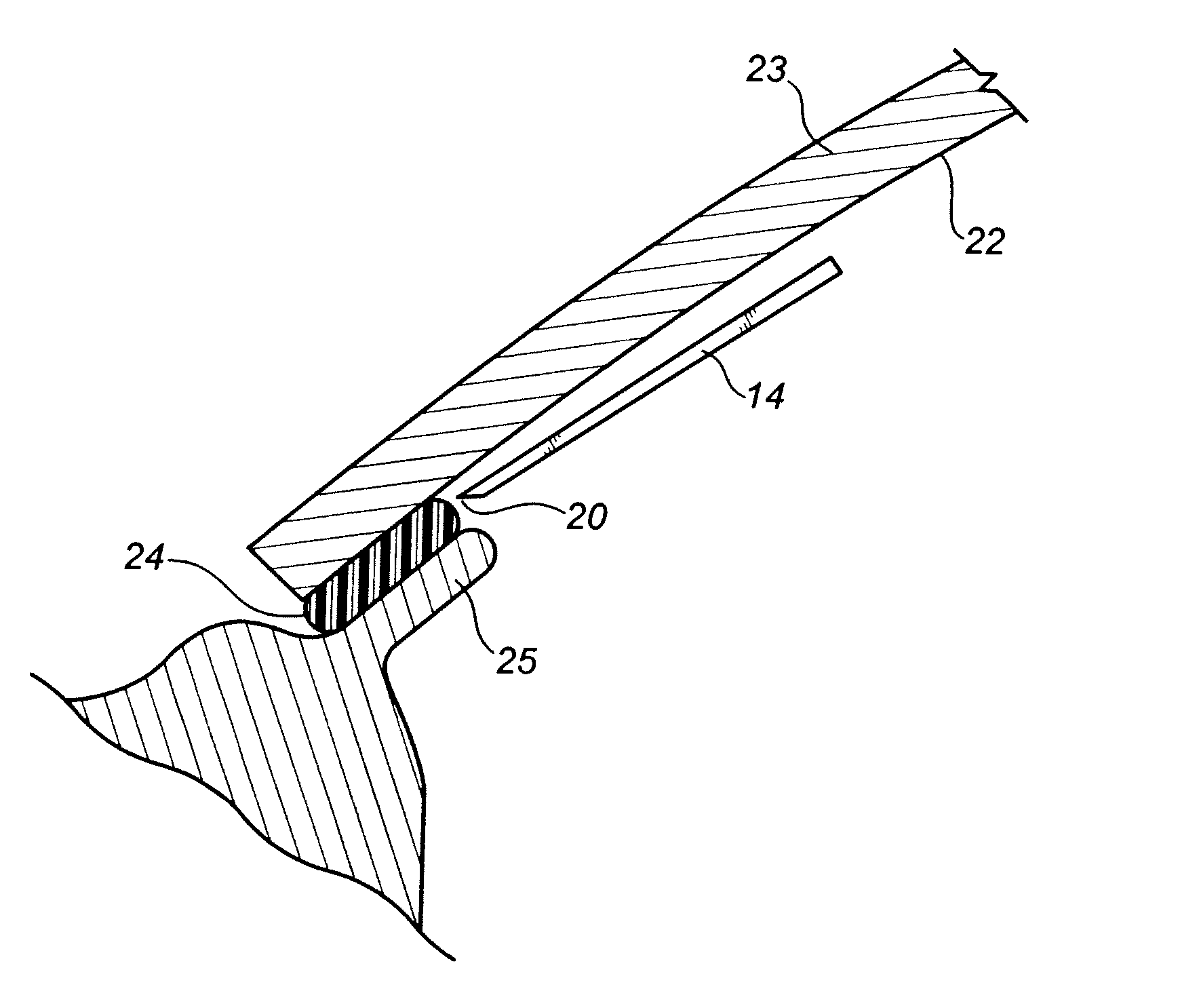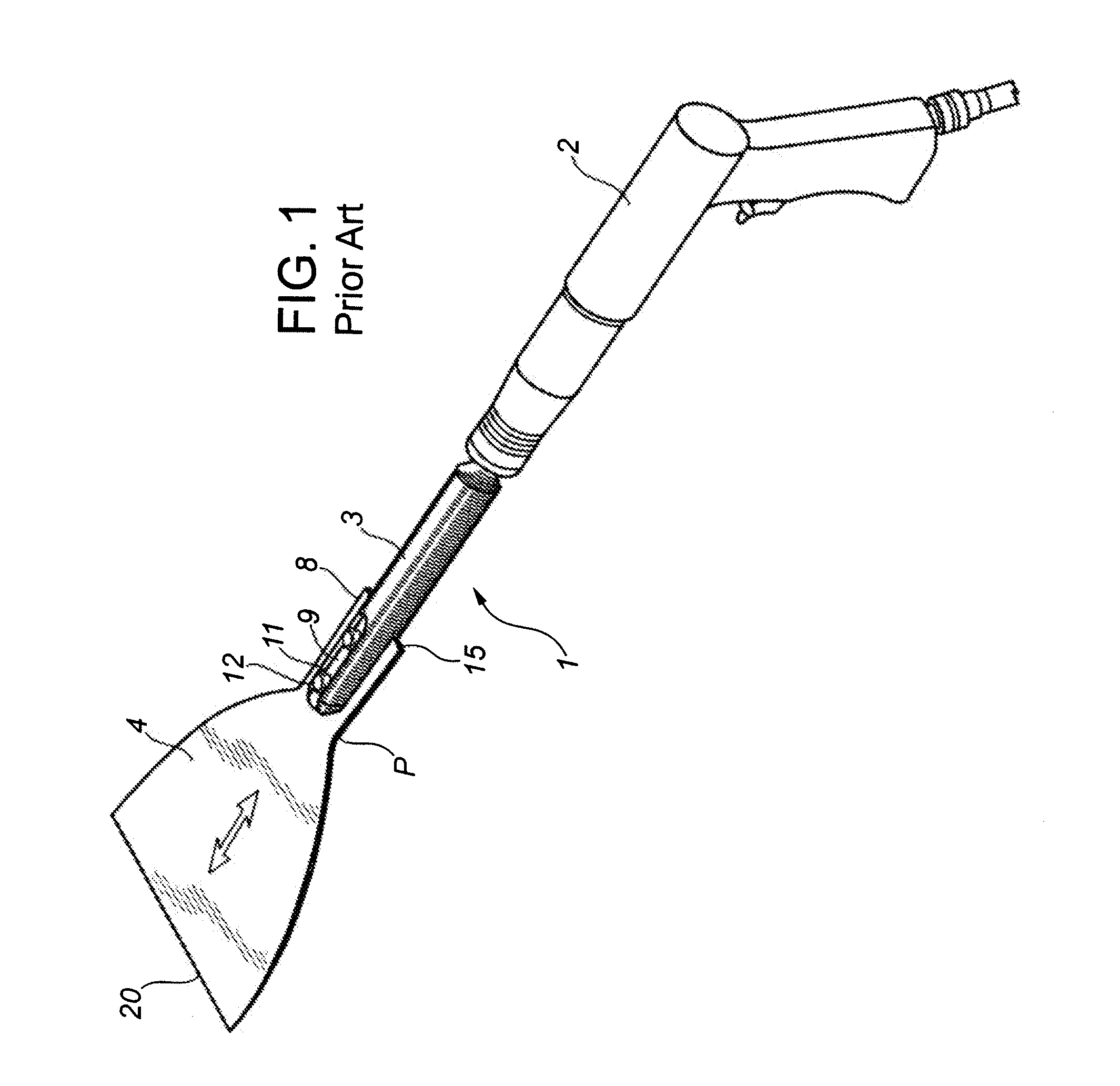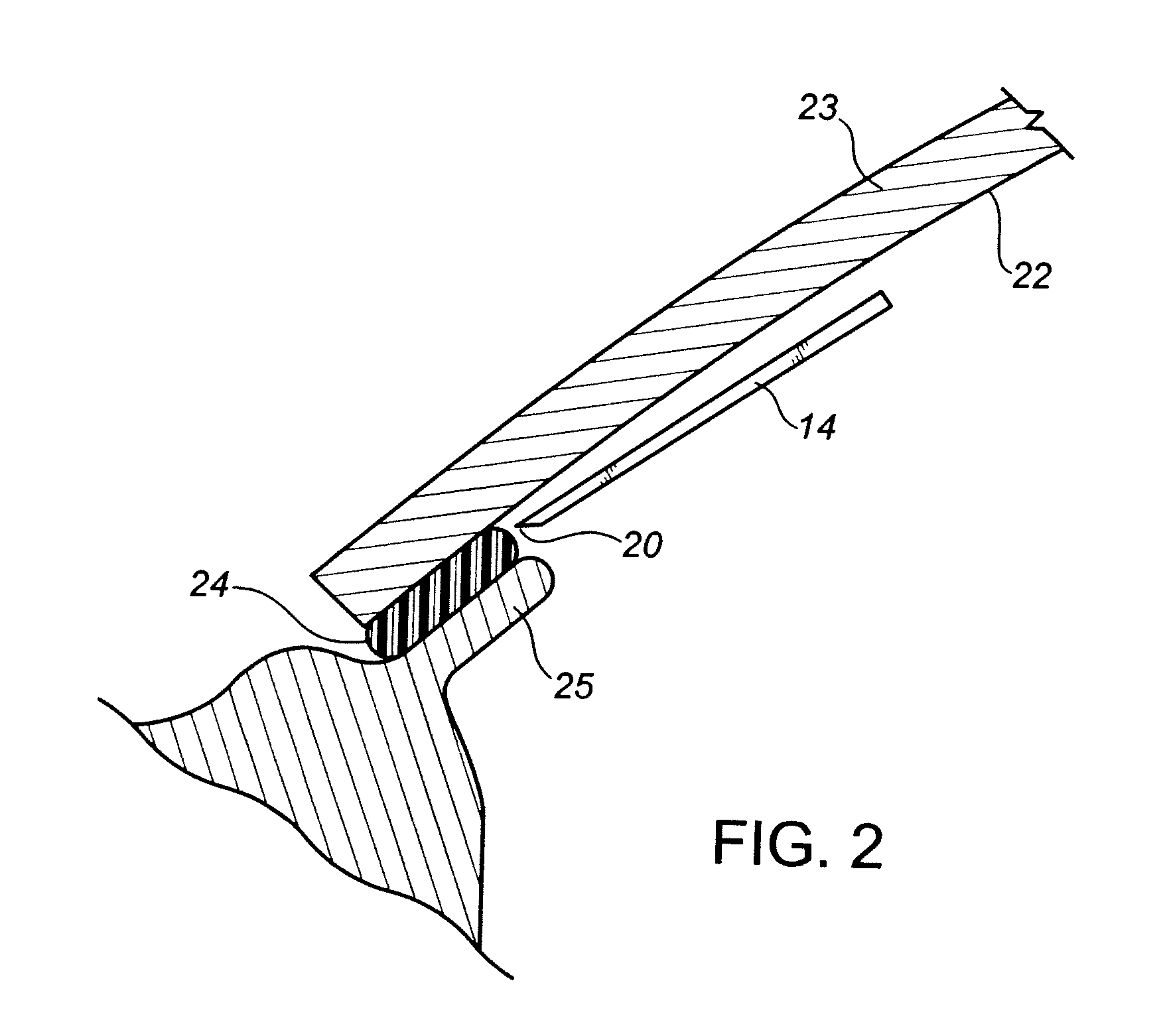Windshield removal assembly, method and blade for same
a technology for removing parts and windshields, which is applied in the direction of metal-working hand tools, metal working apparatuses, manufacturing tools, etc., can solve the problems of difficult cutting with tools, difficult to penetrate, and difficult to remove urethane beds, etc., and achieves sufficient rigidity and lateral flexibility. , the effect of sufficient rigidity
- Summary
- Abstract
- Description
- Claims
- Application Information
AI Technical Summary
Benefits of technology
Problems solved by technology
Method used
Image
Examples
Embodiment Construction
[0060] The windshield removal assembly 1 comprises a reciprocating power tool, such as an air gun 2, shaft 3 and blade 4. FIG. 1 shows the inventor's prior art version of the windshield removal assembly as described in U.S. Pat. No. 6,862,968 and U.S. Published Application No. 2005 / 0126359, wherein the power tool is an air gun 2, the shaft 3 reciprocates in a back and forth movement along the longitudinal axis of the shaft 3. The blade 4 is shown with its bell-shaped configuration. The stress point mentioned above, at the joining of the side edges to the shank, is shown at P.
[0061] The present invention is shown in FIGS. 2-7, with like parts, compared to the prior art device of FIG. 1, being labeled with the same numerals.
[0062]FIG. 2 is schematic in nature, and is of assistance in describing the operation of assembly of the present invention. When assembled and operated, the blade 14 preferably reciprocates with a throw or travel of about ½ inch. The blade 14 is pressed against t...
PUM
| Property | Measurement | Unit |
|---|---|---|
| angle | aaaaa | aaaaa |
| angle | aaaaa | aaaaa |
| angle | aaaaa | aaaaa |
Abstract
Description
Claims
Application Information
 Login to View More
Login to View More - R&D
- Intellectual Property
- Life Sciences
- Materials
- Tech Scout
- Unparalleled Data Quality
- Higher Quality Content
- 60% Fewer Hallucinations
Browse by: Latest US Patents, China's latest patents, Technical Efficacy Thesaurus, Application Domain, Technology Topic, Popular Technical Reports.
© 2025 PatSnap. All rights reserved.Legal|Privacy policy|Modern Slavery Act Transparency Statement|Sitemap|About US| Contact US: help@patsnap.com



